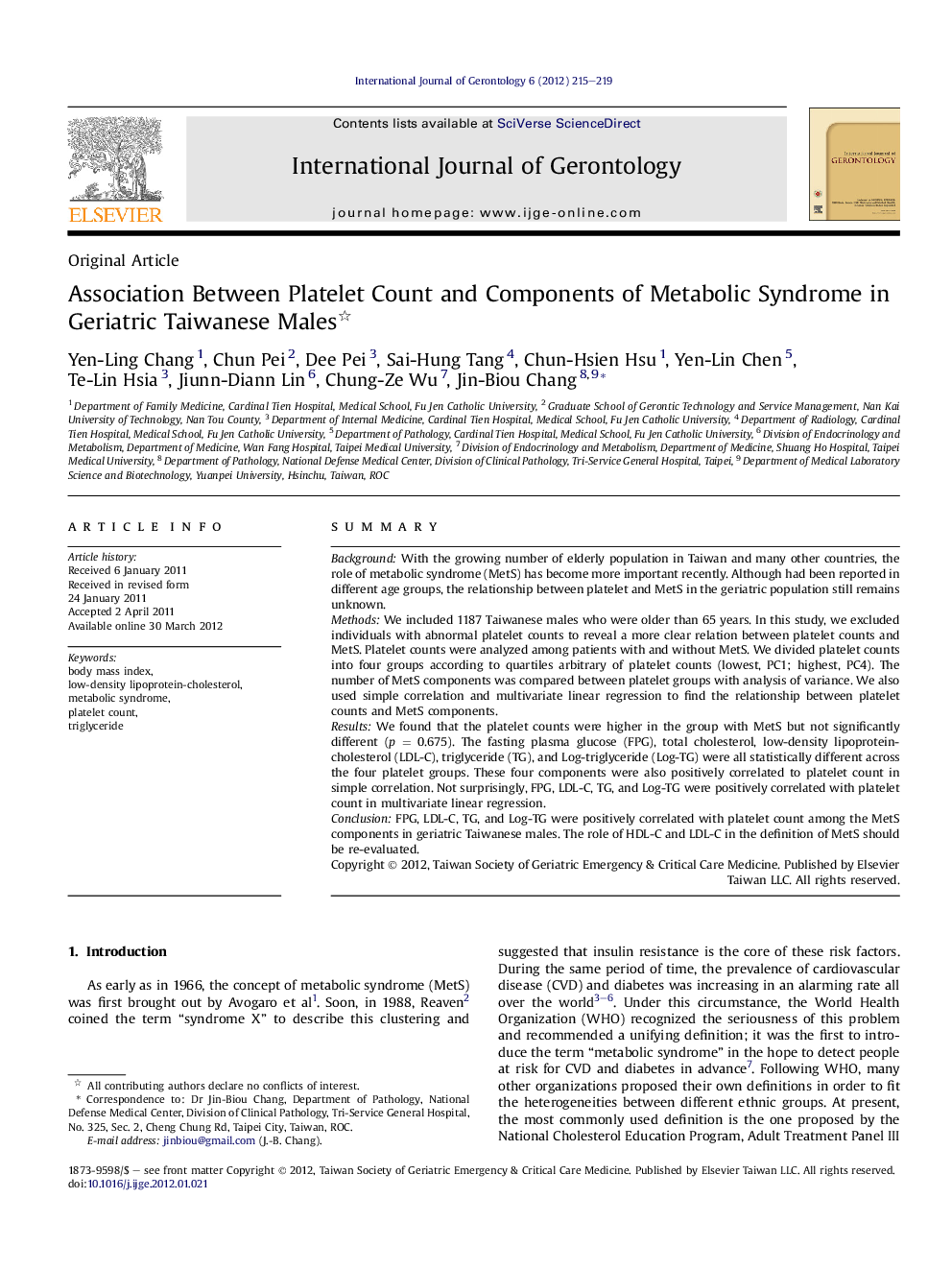| Article ID | Journal | Published Year | Pages | File Type |
|---|---|---|---|---|
| 3325266 | International Journal of Gerontology | 2012 | 5 Pages |
SummaryBackgroundWith the growing number of elderly population in Taiwan and many other countries, the role of metabolic syndrome (MetS) has become more important recently. Although had been reported in different age groups, the relationship between platelet and MetS in the geriatric population still remains unknown.MethodsWe included 1187 Taiwanese males who were older than 65 years. In this study, we excluded individuals with abnormal platelet counts to reveal a more clear relation between platelet counts and MetS. Platelet counts were analyzed among patients with and without MetS. We divided platelet counts into four groups according to quartiles arbitrary of platelet counts (lowest, PC1; highest, PC4). The number of MetS components was compared between platelet groups with analysis of variance. We also used simple correlation and multivariate linear regression to find the relationship between platelet counts and MetS components.ResultsWe found that the platelet counts were higher in the group with MetS but not significantly different (p = 0.675). The fasting plasma glucose (FPG), total cholesterol, low-density lipoprotein-cholesterol (LDL-C), triglyceride (TG), and Log-triglyceride (Log-TG) were all statistically different across the four platelet groups. These four components were also positively correlated to platelet count in simple correlation. Not surprisingly, FPG, LDL-C, TG, and Log-TG were positively correlated with platelet count in multivariate linear regression.ConclusionFPG, LDL-C, TG, and Log-TG were positively correlated with platelet count among the MetS components in geriatric Taiwanese males. The role of HDL-C and LDL-C in the definition of MetS should be re-evaluated.
